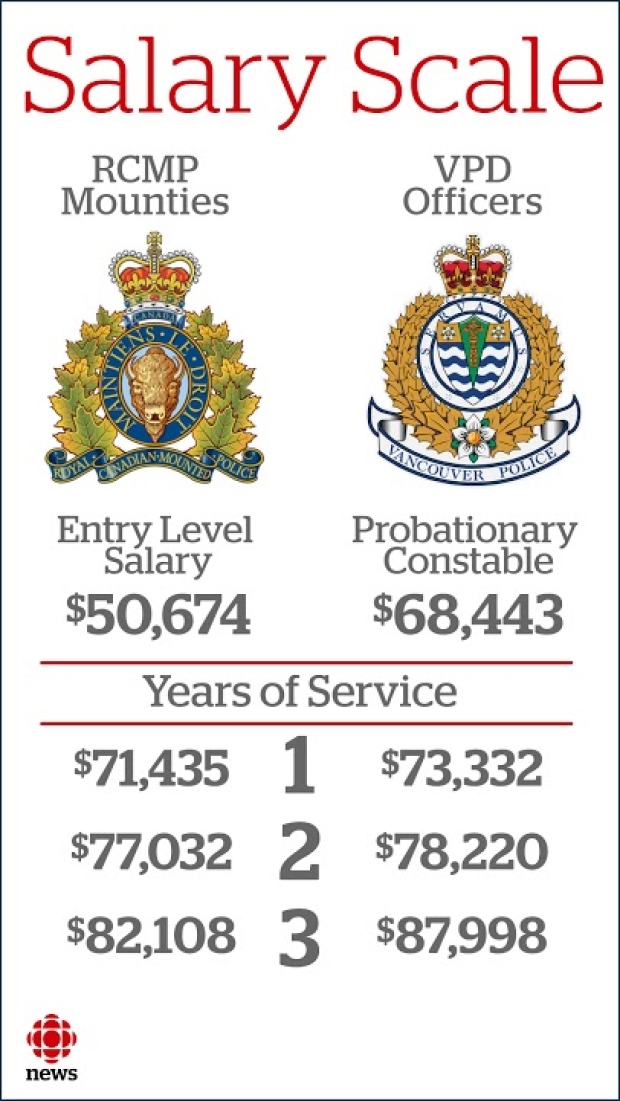
Two officers on watch in Gibsons and Roberts Creek, two in Sechelt and two in Pender Harbour at any time
By Margot Grant
RCMP Staff Sergeant Vishal Mathura has a wish for 2018: at least six more officers for his Sunshine Coast detachment.
The local police force is stretched. Despite a population increase on the Coast in the past 10 years, the number of officers has remained the same: 35. According to the Canadian standard of two officers per 1,000 residents, the Coast should have 60 officers.
Ten years ago, there was more police presence on the road, says Mathura; the administrative side of policing these days takes up more time than before. Of the 35 officers between Earls Cove and Port Mellon, 11 work in the Sechelt force; another nine are busy as investigators and youth officers, or doing fulltime administrative work; and another two work in First Nations policing, not taking other calls.
That leaves a total of 15 officers on patrol, in different shifts, in the southern zone (Gibsons, Port Mellon and Roberts Creek), in Sechelt, and in the zone north of Sechelt. Because there are always officers in training, on leave, on vacation, sick or injured, each zone effectively has two officers on patrol for each shift. Mathura calls in overtime if the number falls below two.
In case of an emergency, the officers can call for reinforcement from the other zone or from Sechelt. Most calls occur between 10 am and 8 pm, but calls during the night are usually of a more serious nature.
Mathura would like three officers per watch. Because of the shifts, that would necessitate at least six more officers on the roster.
With the current numbers of officers available, crime was down 7 per cent at the end of 2017, compared to 2016. Mathura estimates the same number of crimes is solved as 10 years ago, despite the population increase. No officer sits idle, waiting for calls to come in, he emphasizes: all work as school liaisons, do duty with traffic enforcement, or fulfill other tasks.
He says the Sunshine Coast is lucky, as police are usually able to respond as soon as a call comes in: “In a place like Surrey, people may have to wait for police for hours after a break-and-enter.”
But Mathura does not expect he will get his six extra officers any time soon. “Since there has been no increase in the provincial policing budget for awhile, the officers would have to come from other communities. But the Sunshine Coast has one of the the lowest crime rates on the Lower Mainland.”
In communities with a population under 5,000, like Gibsons, the federal government pays 50 per cent of the policing cost. When the population grows to above 5,000, a municipality has to choose between the RCMP or a police force of its own, but the latter is very expensive, Mathura says.
If the municipality chooses to remain with the RCMP, the government pays 30 per cent of the policing cost. “The cost to the municipality goes up 40 per cent — from $50 to $70 out of every $100 — for the same amount of policing while crime goes up with a higher population density.”
Communities with more than 15,000 residents pay 90 per cent of their policing cost through local taxes.
(Article continues below ad)

For the Coast, police priorities for 2018 are traffic enforcement, property crime and assault; theft under $5,000 has gone down since 2016, Mathura says.
 And he is eager to clarify something about the yellow-stripe movement which began with members at the Sunshine Coast and North Vancouver detachments removing or covering the yellow stripes on their trousers as a silent protest against wage disparities.
And he is eager to clarify something about the yellow-stripe movement which began with members at the Sunshine Coast and North Vancouver detachments removing or covering the yellow stripes on their trousers as a silent protest against wage disparities.
“That protest is not about wages per se, which are very good. If you go to college and pursue a career with the RCMP, I’d say you get a very good return on your money. We have nothing to complain about on that score.
“However, wages at municipal forces are higher; consequently, we are constantly training officers who leave. We suffer from high attrition rates and need to recruit new officers on a continuous basis. It is a real strain on the force. As I said, we need every officer here on the Coast.”